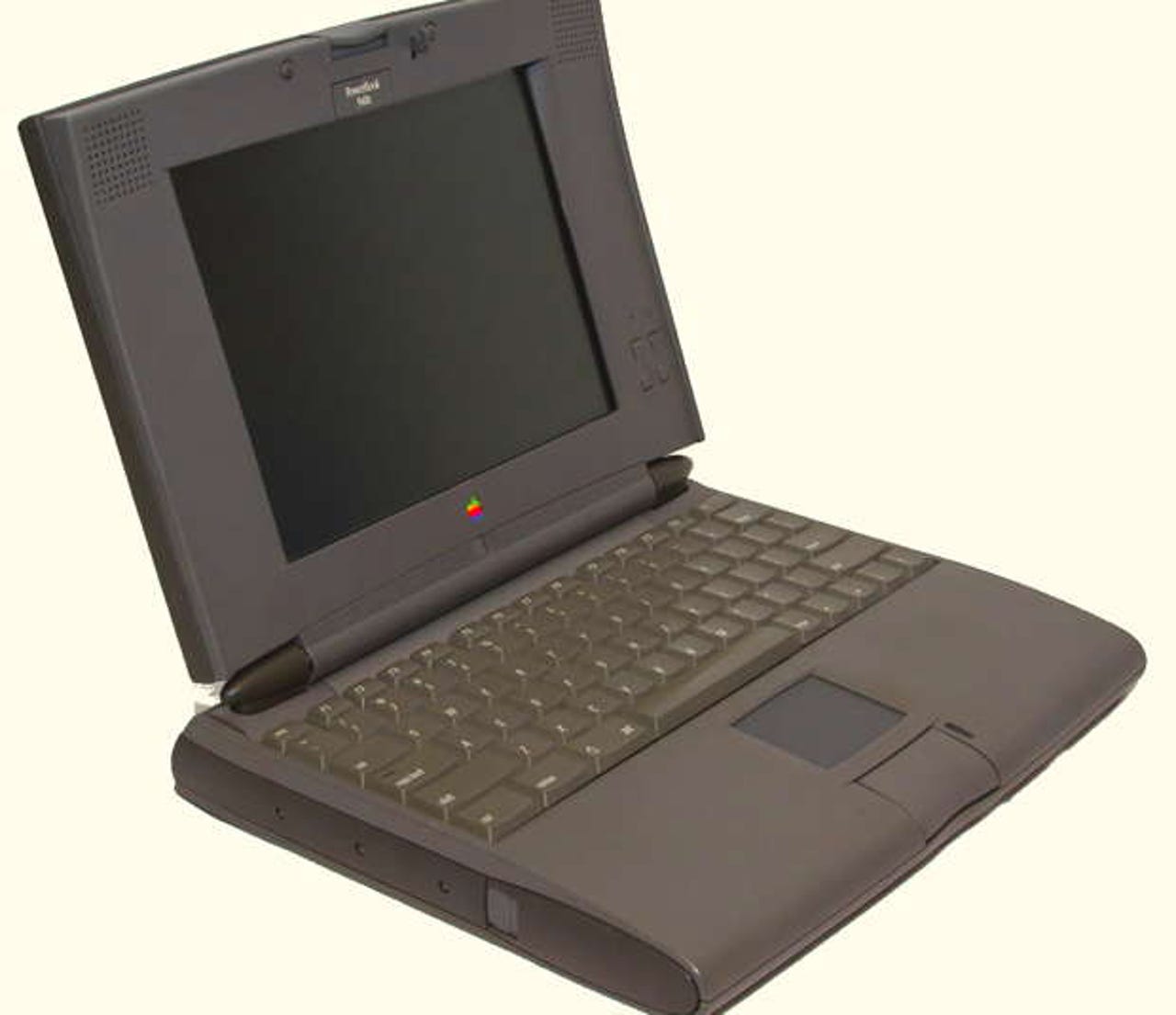Wayback Mac: Remembering the first trackpad laptop

Code-named Blackbird, the PowerBook 500 series was launched this week back in 1994. The line was interesting: It was a high-style and high-performance laptop that offered the mobile user a quality experience. And it could provide a serious case of sticker shock.
Many of today's industry watchers are captivated by Apple's industrial design and ignore Cupertino's penchant for introducing new technologies in products. This is still the case. Back in 1994, the PowerBook 500 was a distinctive machine, just not in the way we're used to now. Blackbird was black and curved — it can still be seen in movies made over the next 10 years when a director wanted a futuristic-looking computer.

But there were many tech "firsts" with the PowerBook 500 series:
Tech Pro Research
These were the first laptops to use a trackpad, a technology still in use today. Unlike today's version, there was the trackpad, which replaced a trackball in previous models, as well as a large, single button to provide the click. Apple was concerned that people would have trouble with the pad, but it proved to be a hit, especially its speed-sensitivity, letting users move quickly for moving faster across the screen and slower... well, you get it.
It was also the first laptop with standard, built-in Ethernet, stereo sound, a multipurpose internal expansion bay that could provide extra batteries, storage, and a card reader. It was the first laptop to use intelligent NiMH batteries (the kind we're used to today.)
Some of this sounds attractive to me today, since Apple MacBooks have become mostly closed machines. The storage and memory and power supplies are so form-fitted that there's no room in the design for internal expansion slots. I still miss having a spare battery, just in case.
I was amused to reread the review of the system that appeared in the May 16, 1994 issue of MacWEEK by Senior Editor Andy Gore. He was struck by the price tag. For the top of the line model, prices were in the $5,500 range. (According to the Consumer Price Index Inflation Calculator, that's $8,798 in today' s bucks.)
In my search I didn't find any PC notebook with the gentle curves that make handling the PowerBook 500s a pleasure. Nor were there any that had the resiliency of the new PowerBook's glass-filled polycarbonate chassis, the same stuff crash helmets are made from.
I found several notebooks that had large, active-matrix color screens. Some were even as crisp as the Sharp screen Apple uses. But none of these had two speakers mounted on each side of the display capable of reproducing 16-bit-stereo sound.
No PC portable I found had built-in Ethernet. When I first read about this feature in MacWEEK, I remember saying, "OK, nice for a roving systems analyst who needs to do some on-the-fly net management." Then I used it. After two weeks of Ethernet, all I can say is that if I ever go back to LocalTalk it will seem like the digital equivalent of the Chinese water torture.
And then, of course, there is the Apple Trackpad. The Trackpad is as far above those trackball dongles found on so many high-end PC portables as a pencil is over blowing charcoal through a piece of bamboo.
No matter how hard I try, I still can't get over sticker shock when I look at the 540c's price. And, after all, the 540c is the only PowerBook to buy.
However, this doesn't change the fact that in a world full of incredibly overpriced portables, the 540c is one heck of a machine.
Apple was caught in a demand constraint on these machines and dealers were outraged according to a story in September, '94. Back then, Macs were sold in the channel. Complaining dealers said that they hadn't received a PowerBook 500 over the summer and didn't expect any product until after Thanksgiving. It ended up being worse, meaning later.
I don't recall what happened to my PowerBook 500. I used one for a number of years. It could be in the back of a closet, waiting for recommission as a low-budget movie prop.